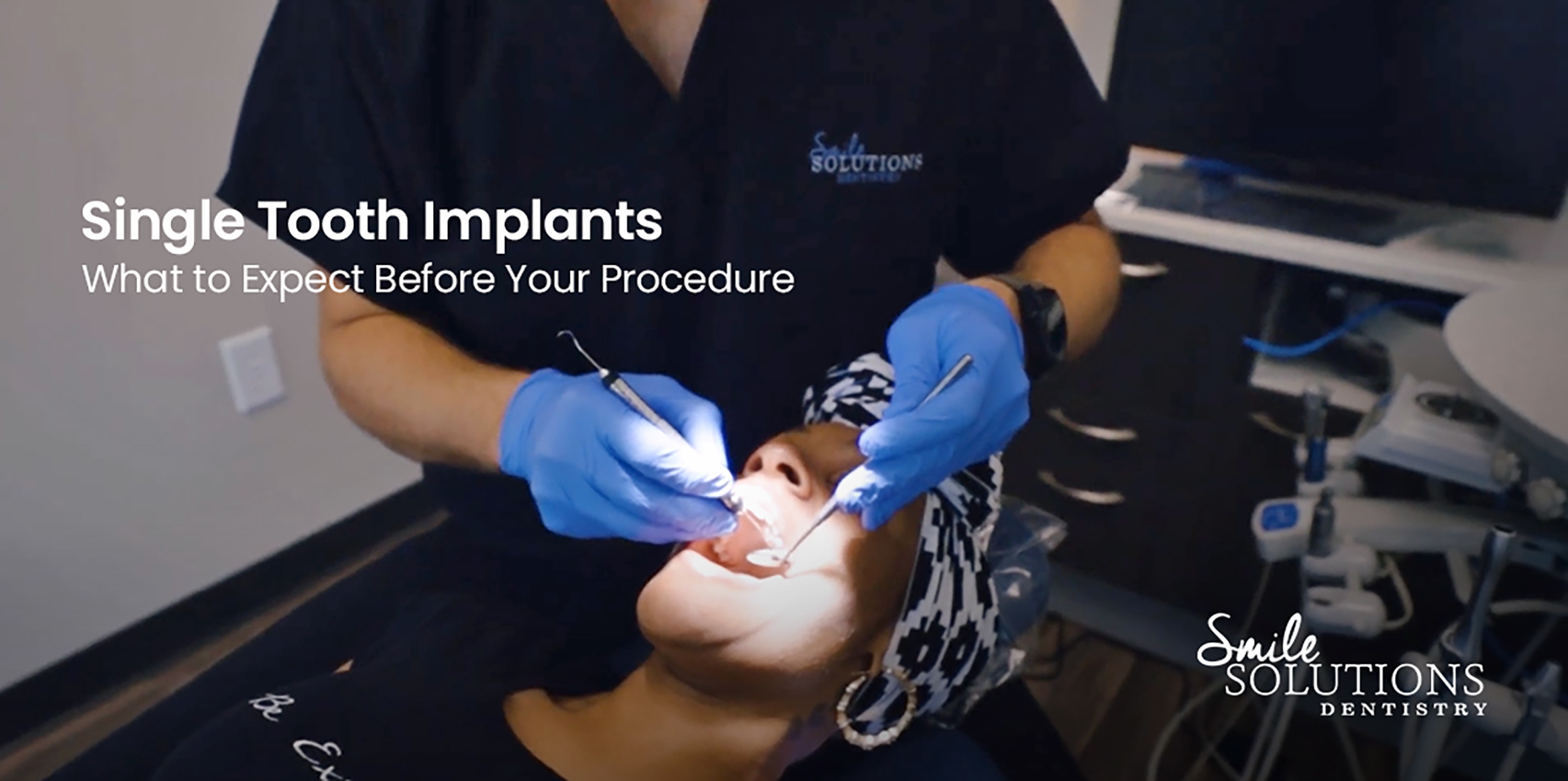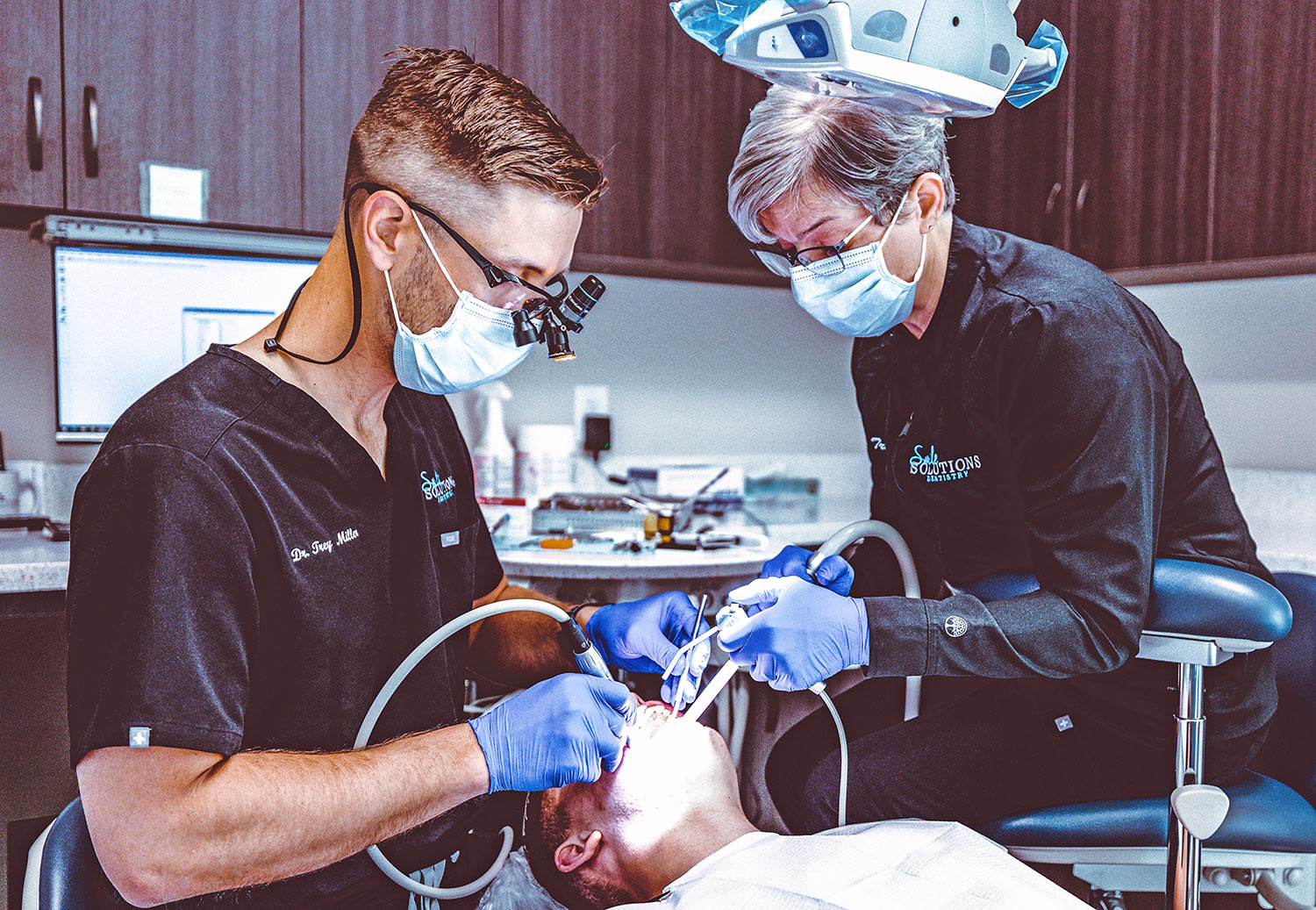Single Tooth Implants
What to Expect Before Your Procedure
The American Collage of Prosthodontists reports that more than 36 million Americans (10.89%) do not have any teeth, and 120 million (35.59%) people in the U.S. are missing at least one tooth. If you’re one of many Americans who’s preparing for your first single tooth implant procedure, it can be an intimidating—and often scary—process.
In this article, we are going to talk a little bit about the history of dental implants, the advantages and disadvantages, and even walk you through our 5-step dental implant process in order to give you a clear picture of what to expect.
We’re not just passionate about the quality of our dental services, but we want our clients to feel comfortable and confident in the days leading up to their procedure.
Now, let’s dive into what exactly single tooth implants are, and how they can help the quality of your life.
What Are Dental Implants?
Dental Implants—invented by a Swedish orthopedic surgeon named Per-Ingvar Brånemark in 1952—are fixtures that serve several purposes in the dental field. Primarily, dental implants replace lost or missing teeth. They are the number one option to safely and effectively replace missing teeth with a natural and aesthetic “tooth-like” replacement. A dental implant looks, feels, and acts just like a natural tooth.
The advantages of dental implants far outweigh the disadvantages.
Single tooth implants are individual, stand-alone units—not connected to other teeth or implants—used to replace missing individual teeth. Dental implant therapy has become the primary strategy for single-tooth replacement, and for good reason. Implants not only preserve the integrity of the teeth adjacent to the edentulous area, but dental implant therapy is less costly and more efficient than FPDs (fixed partial dentures).
Advantages and Disadvantages
The advantages of dental implants far outweigh the disadvantages. One of the most common concerns among our patients is cost—until they realize that the upfront costs are less than they expected. And the money you save up front on (dentures for instance), will be spent on maintenance down the road, whereas implants can last a lifetime without any issues.
Implant Advantages Include:
- Durability
- Realistic Look
- Improved Oral Health
- Comfort
- Improved Speech
Common Implant Disadvantages:
- Cost
- Minor Surgery
Learn About Our 5-Step Dental Implant Process
Our process is straightforward; designed specifically to not only meet our clients’ needs, but to leave them with an overall memorable experience.
Here’s how it works:
Step 1: Removal of Existing Tooth
The first step in the process is to carefully remove the bad tooth while preserving the tooth “socket” as much as possible. Retained natural bone is the key to long term success. Our Doctors have been trained to carefully extract teeth in a safe, quick, gentle, and effective way that significantly reduces or completely eliminates a painful recovery.
Step 2: Placement of Bone Graft
Bone grafts have revolutionized the preservation of bone to easily allow for the placement of an implant. It is carefully placed into the remaining tooth’s socket after all tooth, tooth roots, periodontal ligaments, and infection are removed. Bone grafting is 100% safe and an effective way to preserve and add bone to your maxilla/mandible.
Step 3: Bone Graft Integration
Naturally, your body will heal and integrate the new bone graft usually within 3 months. Osteoblast and Osteoclast (bone building cells) will breakdown and build new bone cells until the new graft is fully integrated in a safe and predictable way.
Step 4: Day of Implant Placement
Surgery can take anywhere from 30 minutes to 1.25 hours for a single tooth implant. Our surgeons have carefully planned each step of the process to make this day as simple and stress-free as possible. We have a proven success rate of nearly 100%. And here’s the best part; you can get back to work the next day with little to no pain, enjoying life as if nothing had happened.
Step 5: Getting Your Tooth
Once your implant has fully healed, we’ll restore your implant with your “tooth”. This is a quick and painless appointment that takes very little time. Now you get to enjoy your new tooth that looks, feels, and performs just like your natural tooth!
Conclusion
Implant surgery can be a confusing (and intimidating) thing to think about. And the myriad of conflicting articles online don’t help. From the beginning, we’ve made it our mission to deliver the kind of dental care we’d want for ourselves. Family dental care is about community, and we’re not happy unless you and your loved ones are.




